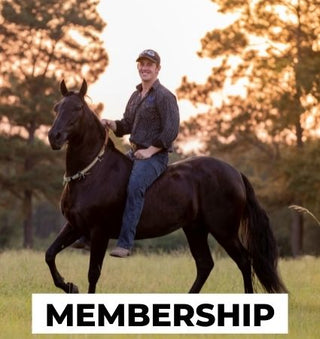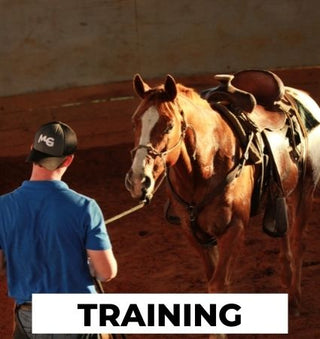What’s The Difference Between Loose Rein And Contact Rein?
What’re the pros and cons?
Whenever I think about the two most trained horses in the whole horse industry, the two sports that come to mind: reining and dressage. Dressage is a lot older, about 400-500 years old, while reining is a good bit newer at about 50-70 years old.
The big difference to me is wearing different clothes and looking for a little bit of different stuff. Ultimately, I think they are pretty similar, “show me how broke your horse is, show me what control you have, and how subtle your cues can be.” The biggest difference in Dressage is it takes years and years for them to be finished, while a three-year-old Reiner has lead changes, spins, and slides.
Do I think it’s because American Quarter Horses are smarter than Warmbloods and Andalusians? Absolutely not.
Coming from gaited horses, which ride very English style on a contact rein, the communication is subtle. Everything happens right here inside my hands. The movement is very small, and the reward is very small. You compare this to loose-rein riding, and the reward is big! When riding on a loose rein, it becomes apparent when they do something right. It makes it easy for the horse to understand.
Whenever you’re on a loose rein, you feel like they aren’t surging on you; you can do everything with one hand without getting in their face. It lends well for many things, being handy, and going bridleless. There are a lot more Reiners who go bridleless compared to Dressage horses. That’s because those Dressage horses count on the contact for communication.
My upbringing was using contact rein. Now, I start horses completely differently than when I was a kid, very Dressage style with contact rein. When I was a kid, my father worked the horses on a line, and I would sit on the horse and be the passenger as he worked the horse. I would have the rein contact and get the horse comfortable to drive forward. Now, we colt-start a horse and do reining with a horse for 2-3 weeks on a loose rein. We get them relaxing and comfortable on the loose rein at the walk, trot, and canter. Then we start to take up contact. At that point, they understand what they need to do, know the body part control, and how to respond to pressure.
I also use contact reining for neck reining. I’ll start drawing in the reins down at the withers, driving him forward, and really collecting him. I keep the pressure low so he doesn’t pick up his head and accepts the contact.
On my English horses or gaited horses, I’m going to drive the horse forward into the frame, and that’s how I compete. The difference and pro for the contact rein are I can communicate very quietly with my hands. Whenever I’m showing in a loose rein, you have to have all that communication through your legs and be subtle with your spurs, legs, and feet because you can’t communicate with the reins. Everything happens right here in my hands whenever I show a gaited horse.
The pros of that contact rein are we can have really subtle communication in our hands. The pros of that loose rein are you get a horse that doesn’t want to build. You get a lot more handy being guided off your legs and seat versus your hands. So this is going to give you a much more relaxed look.
So, I use loose rein for anything Western, anything I want handy, going over obstacles, trail riding, and anything like that. Then, I use contact rein for any horse I want to build up. If I’m trying to make a dressage horse, if I’m trying to make a gaited horse, I want to drive that horse up into the bridle, make them big, get them collected, and right in your hand.
So, those are the pros and cons of contact versus loose rein. I hope that helps answer some questions for you guys!
To see some of these techniques on video, check out my Loose Rein V. Contact Rein video!
Check out more free training resources HERE!









